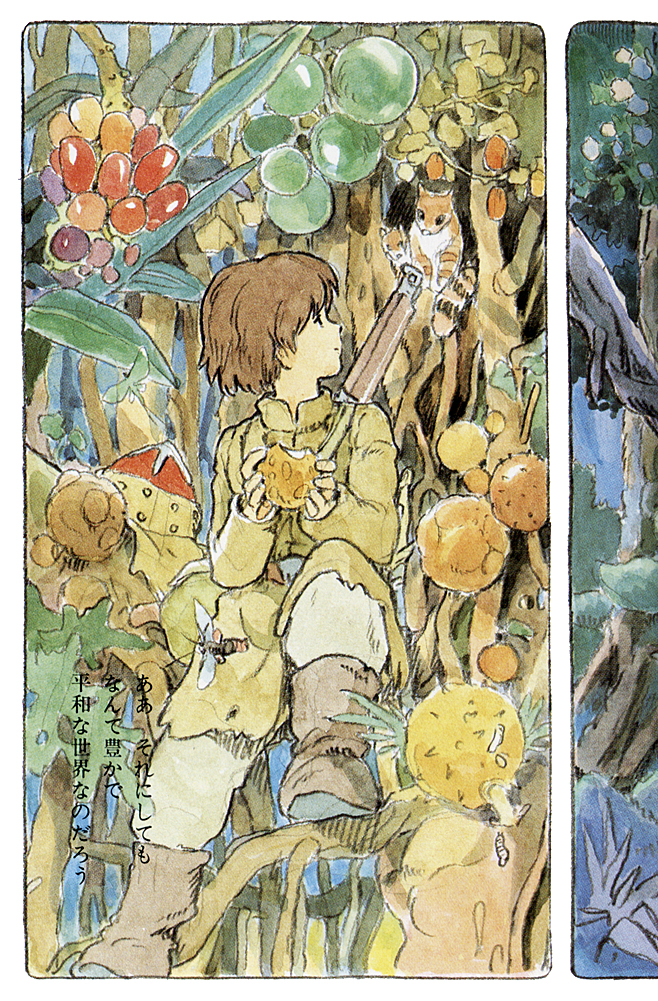Title: So Pretty / Very Rotten: Comics and Essays on Lolita Fashion and Cute Culture
Authors: Jane Mai and An Nguyen
Publisher: Koyama Press
Publication Year: 2017
Pages: 304
This guest review is by Kyra Wiseman.
With their poofy petticoats and delicate dresses, aficionados of Lolita fashion stand out as an elegant oasis among a sea of jeans and t-shirts. It is hard to imagine how such a feminine style of dress could have a dark underbelly, but Jane Mai and An Nguyen explore this in their collection of essays and comics, So Pretty / Very Rotten.
Lolita fashion is a Japanese street fashion based off of Victorian children’s clothing. It emphasizes modesty, femininity and elegance. A basic Lolita outfit (co-ordinate, or co-ord for short) consists of a blouse with puffed sleeves and a round Peter Pan collar, a knee-length dress or skirt, over-the-knee socks, Mary-Jane shoes, a headbow, and most importantly, a bell-shaped petticoat. It is an unashamedly feminine style in a time where femininity is undermined and women feel a pressure to dress and present in a more masculine style in order to be taken seriously. I personally have been a part of this subculture since 2010, and my love for it only grows with each passing year.
While it contains several essays that go into the historical and feminine aspects of Lolita, So Pretty / Very Rotten brings to light a more macabre side of the fashion. Mai and Nguyen discuss how there is an innate sense of materialism within the community. The urge to buy, buy, buy and collect pieces to perfect one’s Lolita wardrobe is prevalent. Often one feels as if they don’t belong unless they have a wardrobe of a certain size or pieces by specific brands. One of Jane Mai’s comics depicts a character literally exchanging body parts in order to gain a deeper understanding of Lolita and what it means to be a part of the fashion.
A less macabre theme, though no less troublesome, is that of escapism. Many view Lolita and the window to another time, as it creates a gateway to a world where life is simpler and where teatime and lovely dresses help take away the pain and stresses of real life. The authors express the idea that sometimes Lolitas can get so wrapped up in this world of beauty and luxury that they forget to take care of other aspects of their lives. They do note, however, that there is also a sense of freedom in making the choice to dress in a way that is so outlandish. When you’re surrounded by a supportive community that encourages self-expression through fashion, it feels as though you have the power and opportunity to be yourself, no matter how strange your interests are. As one character says, “Isn’t there a kind of power in announcing so plainly the things that you like?”
So Pretty / Very Rotten is fantastic for readers who are interested in alternative Japanese fashion, whether they are beginners or seasoned pros. I personally enjoyed the illustrations and the love and attention that Mai and Nguyen have brought to recreating Lolita outfits in a way that is representative of their own tastes while portraying the versatility of the fashion. I hadn’t expected the book to touch on ideas relating to Lolita as escapism or to explore the darker side of using clothes to express oneself. I felt as though this unique perspective helped me look at the fashion I love in a new light, and perhaps it has also helped me recognize my own habits in the way I approach the fashion. This collection of short essays and comics will be a welcome addition to the library of those who are Lolitas or those who love them and would appreciate a better understanding of this weird yet wonderful frilly world.
* * * * *
Kyra Wiseman is a Washington D.C. native with a passion for alternative fashion. She has been a part of the DC/MD/VA metropolitan area Lolita community for six years.













